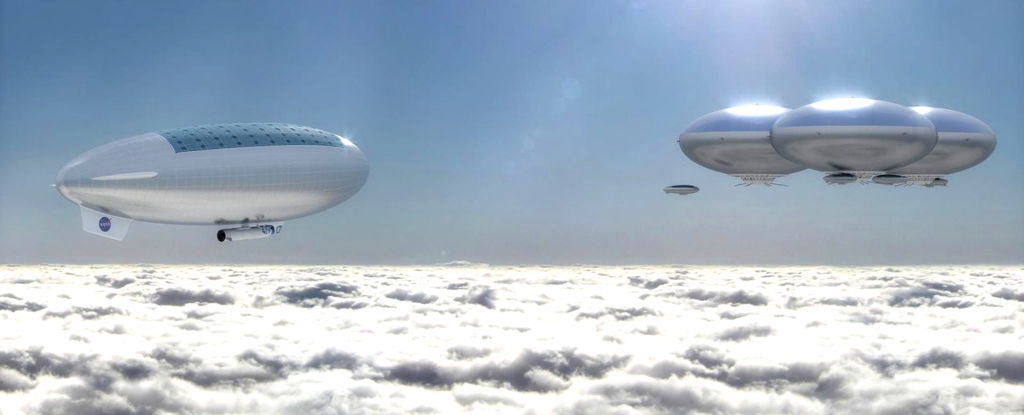Exploring Venus: Unraveling its Enigmatic Secrets with Balloon-Borne Seismometers
Introduction: Unveiling Venus’ Enigma
Venus, our neighboring planet, has mystified scientists for years due to its enigmatic inner workings. While seismology has provided profound insights into Earth’s geology and climate, Venus has remained a puzzle due to its scorching surface temperatures and sulfuric acid clouds.
A Novel Solution: Seismometers on Balloons
Siddharth Krishnamoorthy from NASA’s Jet Propulsion Laboratory and Daniel Bowman of Sandia National Laboratory propose an innovative solution – deploying seismometers from balloons. This idea, though unconventional, offers a unique way to comprehend Venus’ secrets.
Thinking Beyond Ground-Based Seismometers
Traditionally, seismometers are anchored to the ground to detect seismic activity. However, a different kind of seismometer is gaining traction now – the infrasound seismometer. This specialized device monitors infrasound pressure waves generated by seismic events that travel through mediums other than the ground, such as the atmosphere.
Leveraging Venus’ Atmospheric Bounty
Venus boasts a thick atmosphere, making it an ideal candidate for utilizing infrasound seismometers. This technology can help us probe the planet’s interior despite its hostile surface conditions.
Unveiling Venus’ Cloud-Enshrouded Secrets
Interestingly, Venus’ cloud layer high above its surface resembles Earth’s environment more closely than any other place in the solar system. This unique characteristic has prompted numerous concepts of establishing “cloud cities” on Venus.
Conclusion: A Bright Future for Venus Exploration
By employing balloon-borne infrasound seismometers, scientists aim to unravel the mysteries of Venus’ inner dynamics. This innovative approach holds the promise of shedding light on the planet’s geological and climatic intricacies, bringing us closer to understanding the secrets concealed beneath its turbulent clouds.

Efficient Solution: Balloon-Borne Sensors for Venus Exploration
When it comes to collecting infrasound data, there’s no need to go to the extent of building an entire city on Venus. A high-altitude balloon offers a practical and effective solution, sidestepping the challenge of crafting materials to endure Venus’ harsh surface conditions.
Leapfrogging Material Hurdles with Balloon-Borne Sensors
NASA has invested substantial resources in crafting radiation-hardened sensors capable of withstanding Venus’ extreme pressures and temperatures. However, these sensors, while resilient, are relatively basic. For an instrument suspended at a more hospitable altitude, the existing sensors would suffice without necessitating additional developmental endeavors.
Bridging the Signal Gap: Earthquakes and Infrasound
The pivotal question arises: How does the signal traverse from the ground to sensors hovering in the atmosphere? Earthquakes, or in the context of Venus, venusquakes, generate powerful low-frequency sounds that travel through the atmosphere. The sensitive microphones positioned in the balloon can discern and capture these signals effectively.
Earthly Inspiration: Replicating Infrasound Success
A recent Earth-based experiment serves as a model for this approach. By deploying an infrasound microphone in the stratosphere, seismic signals from earthquakes of magnitudes 7.3 and 7.5, even at a distance of 3,000 km from the epicenters, were detectable. This achievement stands as evidence that a similar system could be adapted for Venus with appropriate modifications tailored to its distinct environmental conditions.
Achieving Greater Proximity: A Promising Prospect
Notably, this experiment surpassed its predecessors in terms of distance. This development holds significance as it closely emulates the proximity an actual sensor would maintain about the epicenter of a venusquake, reinforcing its potential applicability in Venus exploration.
Embracing Innovation for Venus
The idea of employing balloon-borne infrasound sensors to explore Venus showcases the prowess of innovative thinking. By capitalizing on natural sound transmission through the atmosphere, scientists could unlock the planet’s mysteries without the need for intricate surface technology. This bold approach opens the door to a new realm of understanding Venus’ internal dynamics and seismic activity.
A Compelling Frontier for Exploration
Venus has emerged as an intriguing target for exploration, with its mysteries drawing increasing attention. However, several hurdles remain on the path to uncovering its secrets.
Challenges in Venus Exploration
- Uncharted Territory: Balloon Missions to Venus Launching a successful balloon mission to Venus remains uncharted territory, compounded by the complexity of deploying sensitive seismometers onboard.
- Missing Ground Truth: Validation Dilemma Unlike the Earth experiment, Venus lacks external sensors to corroborate seismic signals, requiring researchers to speculate on their origins.
- Deciphering Data Patterns: Interpretation Complexity Interpreting data patterns presents challenges—distinguishing between venus quakes and other influences like balloon motion without a “ground truth.”
- Magnitude Matters: Detecting Smaller Quakes Detecting small quakes raises questions—Can seismometers designed for larger quakes on Earth pick up subtler tremors, crucial for understanding Venus’ seismicity?
- Narrowing Detection Range: Prioritizing Less Intense Activity Venus’ seismic activity might differ—detecting less intense yet significant quakes gains importance, necessitating advanced sensor capabilities.
Innovative Approach: Adapting Earthly Expertise
Leveraging Earth-developed technologies for space exploration holds promise. Employing seismometers creatively provides fresh insight into Venus.
Future Prospects: Awaiting Venus’ Turn
Despite nearly a dozen planned missions to Venus, utilizing these innovations remains absent from immediate plans. Unraveling our sister planet’s inner workings awaits its appointed time.
Conclusion: Venus, a Frontier Yet Unexplored
While challenges persist, the allure of exploring Venus persists. The complexities underline the need for ingenious solutions to decode its mysteries, reminding us of the intricate dance between human curiosity and the vast cosmos.
This article was originally published by Universe Today. Read the original article.
Also Read: Have You Noticed Climate Change In Your Lifetime?






